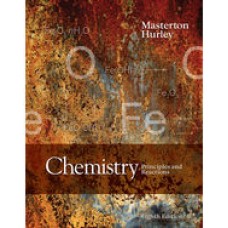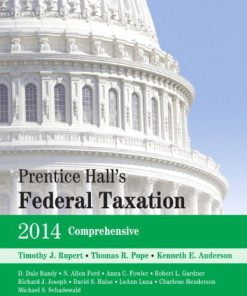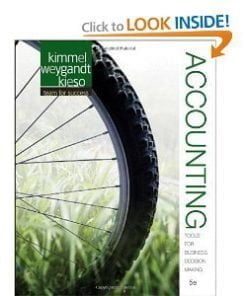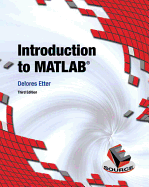Solution Manual for Chemistry Principles and Reactions, 8th Edition
$35.00 Original price was: $35.00.$26.50Current price is: $26.50.
Solution Manual for Chemistry Principles and Reactions, 8th Edition
Solution Manual for Chemistry Principles and Reactions, 8th Edition

Product details:
- ISBN-10 : 130507937X
- ISBN-13 : 978-1305079373
- Author: William L. Masterton
Discover all of the fundamental topics of general chemistry with this brief, reader-oriented book. CHEMISTRY: PRINCIPLES AND REACTIONS, 8e, provides a clear, concise presentation based on the authors’ more than 50 years of combined teaching experience. The book includes graded and concept-driven examples as well as examples that focus on molecular reasoning and understanding, as well as “Chemistry: Beyond the Classroom” essays that demonstrate the relevance of the concepts and highlight some of the most up-to-date uses of chemistry. A strong, enhanced art program helps readers visualize chemical concepts. Integrated end-of-chapter questions and Key Concepts correlate to OWLv2, the #1 online homework and tutorial system for chemistry.
Table contents:
- Ch 1: Matter and Measurements
- 1-1 Matter and Its Classifications
- 1-2 Measurements
- 1-3 Properties of Substances
- Summary Problem
- Questions and Problems
- Ch 2: Atoms, Molecules, and Ions
- 2-1 Atoms and the Atomic Theory
- 2-2 Components of the Atom
- 2-3 Quantitative Properties of the Atom
- 2-4 Introduction to the Periodic Table
- 2-5 Molecules and Ions
- 2-6 Formulas of Ionic Compounds
- 2-7 Names of Compounds
- Summary Problem
- Questions and Problems
- Ch 3: Mass Relations in Chemistry; Stoichiometry
- 3-1 The Mole
- 3-2 Mass Relations in Chemical Formulas
- 3-3 Mass Relations in Reactions
- Summary Problem
- Questions and Problems
- Ch 4: Reactions in Aqueous Solution
- 4-1 Precipitation Reactions
- 4-2 Acid-Base Reactions
- 4-3 Oxidation-Reduction Reactions
- Summary Problem
- Questions and Problems
- Ch 5: Gases
- 5-1 Measurements on Gases
- 5-2 The Ideal Gas Law
- 5-3 Gas Law Calculations
- 5-4 Stoichiometry of Gaseous Reactions
- 5-5 Gas Mixtures: Partial Pressures and Mole Fractions
- 5-6 Kinetic Theory of Gases
- 5-7 Real Gases
- Summary Problem
- Questions and Problems
- Ch 6: Electronic Structure and the Periodic Table
- 6-1 Light, Photon Energies, and Atomic Spectra
- 6-2 The Hydrogen Atom
- 6-3 Quantum Numbers
- 6-4 Atomic Orbitals; Shapes and Sizes
- 6-5 Electron Configurations in Atoms
- 6-6 Orbital Diagrams of Atoms
- 6-7 Electron Arrangements in Monatomic Ions
- 6-8 Periodic Trends in the Properties of Atoms
- Summary Problem
- Questions and Problems
- Ch 7: Covalent Bonding
- 7-1 Lewis Structures; the Octet Rule
- 7-2 Molecular Geometry
- 7-3 Polarity of Molecules
- 7-4 Atomic Orbitals; Hybridization
- Summary Problem
- Questions and Problems
- Ch 8: Thermochemistry
- 8-1 Principles of Heat Flow
- 8-2 Measurement of Heat Flow; Calorimetry
- 8-3 Enthalpy
- 8-4 Thermochemical Equations
- 8-5 Enthalpies of Formation
- 8-6 Bond Enthalpy
- 8-7 The First Law of Thermodynamics
- Summary Problem
- Questions and Problems
- Ch 9: Liquids and Solids
- 9-1 Comparing Solids, Liquids, and Gases
- 9-2 Liquid-Vapor Equilibrium
- 9-3 Phase Diagrams
- 9-4 Molecular Substances; Intermolecular Forces
- 9-5 Network Covalent, Ionic, and Metallic Solids
- 9-6 Crystal Structures
- Summary Problem
- Questions and Problems
- Ch 10: Solutions
- 10-1 Concentration Units
- 10-2 Principles of Solubility
- 10-3 Colligative Properties of Nonelectrolytes
- 10-4 Colligative Properties of Electrolytes
- Summary Problem
- Questions and Problems
- Ch 11: Rate of Reaction
- 11-1 Meaning of Reaction Rate
- 11-2 Reaction Rate and Concentration
- 11-3 Reactant Concentration and Time
- 11-4 Models for Reaction Rate
- 11-5 Reaction Rate and Temperature
- 11-6 Catalysis
- 11-7 Reaction Mechanisms
- Summary Problem
- Questions and Problems
- Ch 12: Gaseous Chemical Equilibrium
- 12-1 The N2O4-NO2 Equilibrium System
- 12-2 The Equilibrium Constant Expression
- 12-3 Determination of K
- 12-4 Applications of the Equilibrium Constant
- 12-5 Effect of Changes in Conditions on an Equilibrium System
- Summary Problem
- Questions and Problems
- Ch 13: Acids and Bases
- 13-1 Bronsted-Lowry Acid-Base Model
- 13-2 The Ion Product of Water
- 13-3 pH and pOH
- 13-4 Weak Acids and Their Equilibrium Constants
- 13-5 Weak Bases and Their Equilibrium Constants
- 13-6 Acid-Base Properties of Salt Solutions
- 13-7 Extending the Concept of Acids and Bases: The Lewis Model
- Summary Problem
- Questions and Problems
- Ch 14: Equilibria in Acid-Base Solutions
- 14-1 Buffers
- 14-2 Acid-Base Indicators
- 14-3 Acid-Base Titrations
- Summary Problem
- Questions and Problems
- Ch 15: Complex Ion and Precipitation Equilibria
- 15-1 Complex Ion Equilibria; Formation Constant (Kf)
- 15-2 Solubility; Solubility Product Constant (Ksp)
- 15-3 Precipitate Formation
- 15-4 Dissolving Precipitates
- Summary Problem
- Questions and Problems
- Ch 16: Spontaneity of Reaction
- 16-1 Spontaneous Processes
- 16-2 Entropy, S
- 16-3 Free Energy, G
- 16-4 Standard Free Energy Change, DeltaGDegree
- 16-5 Effect of Temperature, Pressure, and Concentration on Reaction Spontaneity
- 16-6 The Free Energy Change and the Equilibrium Constant
- 16-7 Additivity of Free Energy Changes; Coupled Reactions
- Summary Problem
- Questions and Problems
- Ch 17: Electrochemistry
- 17-1 Oxidation-Reduction Reactions Revisited
- 17-2 Voltaic Cells
- 17-3 Standard Voltages
- 17-4 Relations between EDegree, DeltaGDegree, and K
- 17-5 Effect of Concentration on Voltage
- 17-6 Electrolytic Cells
- 17-7 Commercial Cells
- Summary Problem
- Questions and Problems
- Ch 18: Nuclear Reactions
- 18-1 Nuclear Stability
- 18-2 Radioactivity
- 18-3 Rate of Radioactive Decay
- 18-4 Mass-Energy Relations
- 18-5 Nuclear Fission
- 18-6 Nuclear Fusion
- Summary Problem
- Questions and Problems
- Ch 19: Complex Ions
- 19-1 Composition of Complex Ions
- 19-2 Naming Complex Ions and Coordination Compounds
- 19-3 Geometry of Complex Ions
- 19-4 Electronic Structure of Complex Ions
- Summary Problem
- Questions and Problems
- Ch 20: Chemistry of the Metals
- 20-1 Metallurgy
- 20-2 Reactions of the Alkali and Alkaline Earth Metals
- 20-3 Redox Chemistry of the Transition Metals
- Summary Problem
- Questions and Problems
- Ch 21: Chemistry of the Nonmetals
- 21-1 The Elements and Their Preparation
- 21-2 Hydrogen Compounds of Nonmetals
- 21-3 Oxygen Compounds of Nonmetals
- 21-4 Oxoacids and Oxoanions
- Summary Problem
- Questions and Problems
- Ch 22: Organic Chemistry
- 22-1 Saturated Hydrocarbons: Alkanes
- 22-2 Unsaturated Hydrocarbons: Alkenes and Alkynes
- 22-3 Aromatic Hydrocarbons and Their Derivatives
- 22-4 Functional Groups
- 22-5 Isomerism in Organic Compounds
- 22-6 Organic Reactions
- Summary Problem
- Questions and Problems
- Ch 23: Organic Polymers, Natural and Synthetic
- 23-1 Synthetic Addition Polymers
- 23-2 Synthetic Condensation Polymers
- 23-3 Carbohydrates
- 23-4 Proteins
- Summary Problem
- Questions and Problems
- Appendices
- Appendix 1: Units, Constants, and Reference Data
- Appendix 2: Properties of the Elements
- Appendix 3: Exponents and Logarithms
- Appendix 4: Molecular Orbitals
- Appendix 5: Answers to Even-Numbered and Challenge Questions and Problems
- Index/Glossary
People also search:
|
chemistry principles and reactions 8th edition solutions pdf free
chemistry principles and reactions 8th edition
chemistry principles and reactions 8th edition pdf free
chemistry principles and reactions 8th edition answer key
chemical reactions with names
|
Related products
Solution Manual
Solution Manual
Solution Manual
Prentice Hall’s Federal Taxation 2014 Comprehensive Rupert 27th Edition Solutions Manual
Solution Manual
Solution manual for Accounting: Tools for Business Decision Making Kimmel Weygandt Kieso 5th Edition
Solution Manual
Solution Manual for Introduction to Robotics Mechanics and Control 3rd Edition by Craig
Solution Manual
Solution Manual











